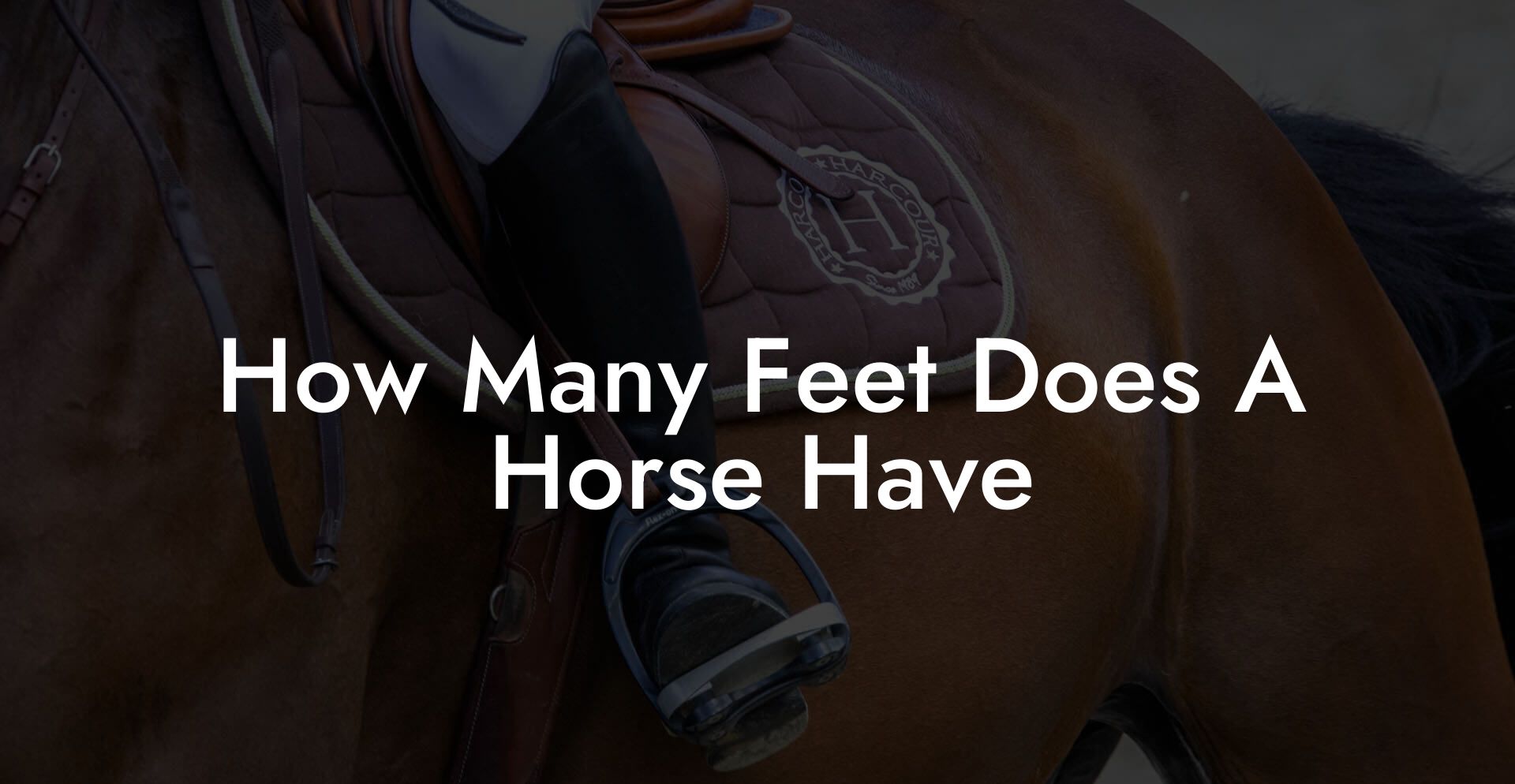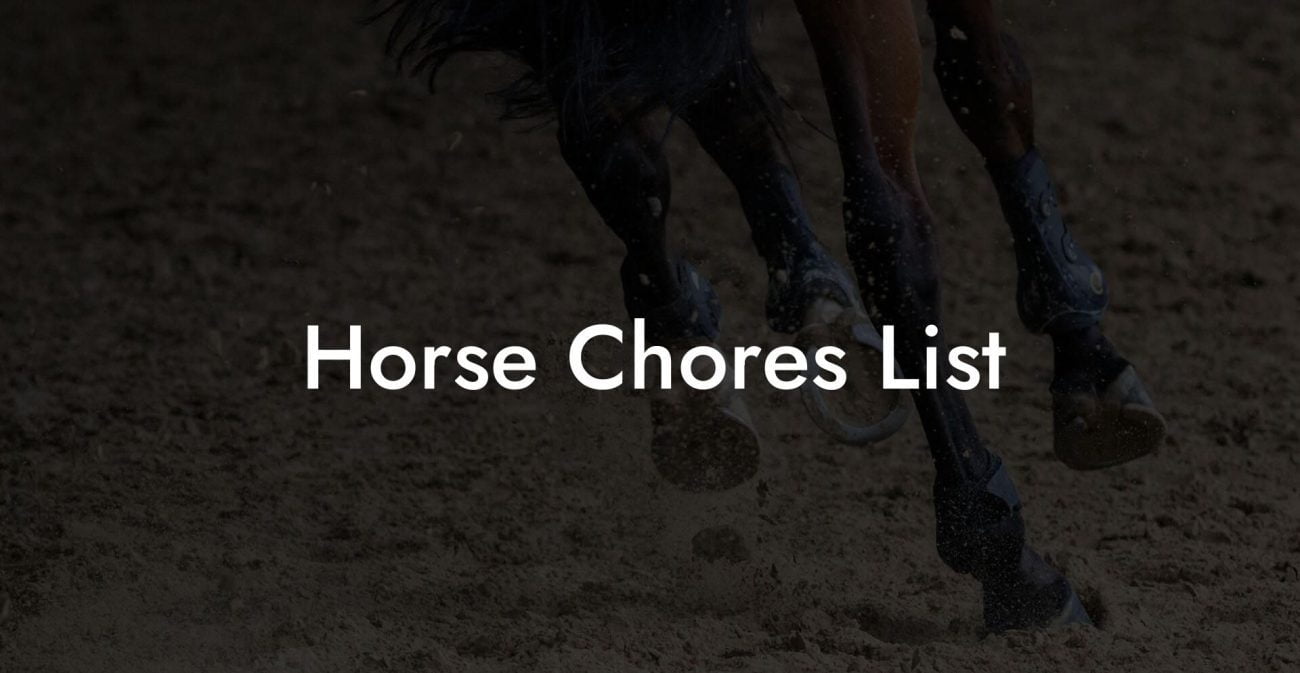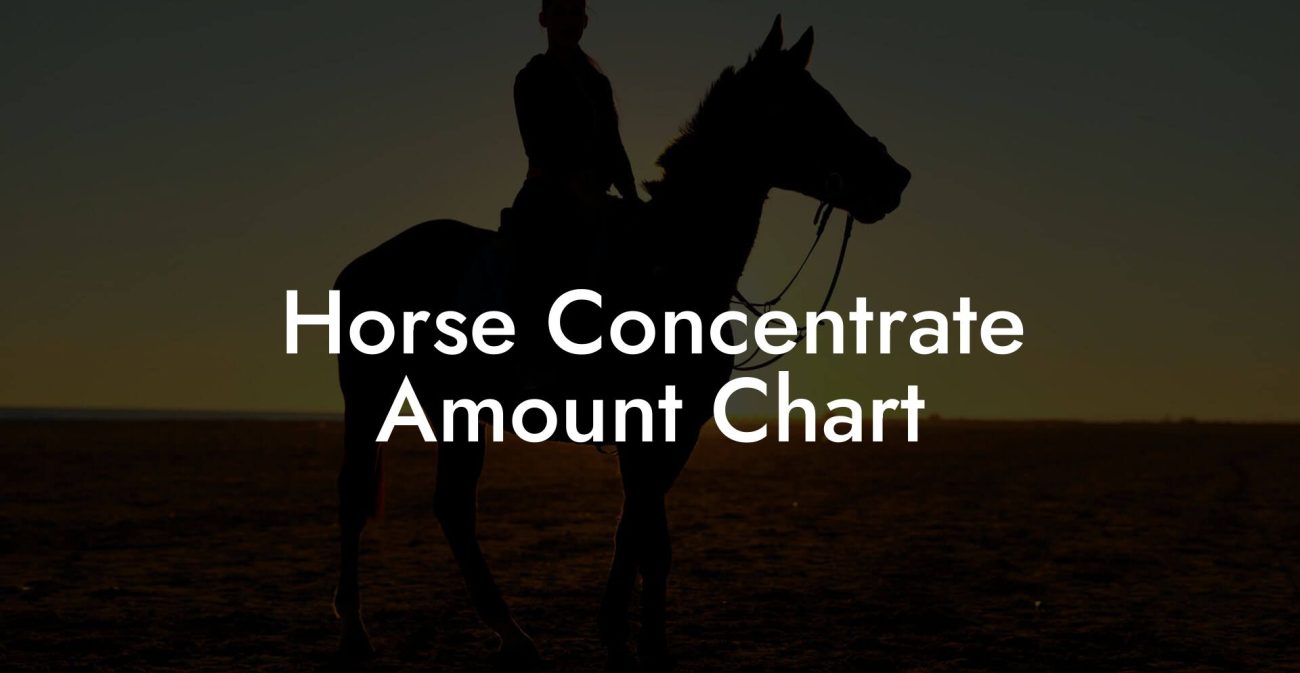Ever paused mid-scroll on your feed and wondered, “How many feet does a horse have?” It might sound like a riddle from your quirky Gen-Z dorm room, but this question opens the door to a surprisingly deep dive into equine anatomy, hoof care, and even some myth-busting about our four-legged friends. Buckle up, this isn’t your average “horse trivia” article. We’re about to gallop into a world where every hoof matters and where caring for your equine companion becomes a full-blown lifestyle.
Quick Links to Useful Sections
- Horse Anatomy 101: Beyond Just Four Feet
- The Four-Footed Fact and Common Myths Debunked
- The Importance of Equine Foot Health in horse care
- Exploring the Modern Techniques in Equine Hoof Care
- Understanding and Preventing Common Equine Foot Problems
- Laminitis
- Hoof Cracks and Splits
- Thrush
- Overgrown Hooves
- How to Build a Winning Routine for Equine Foot Care
- Daily Checks and Cleaning
- Regular Farrier Visits
- Proper Nutrition and Hydration
- Environmental Management
- Integrating Modern Technology into Horse Care
- Resources and Community Support: Your Next Steps in Equine Advocacy
- From Curiosity to Mastery: Your Personal Journey in Horse Care
- Equine Foot Care FAQs: Your Burning Questions Answered
- Your Four-Footed Future: Embrace the Journey of Equine Care
Horse Anatomy 101: Beyond Just Four Feet
Let’s get one thing straight right out of the gate: horses have four feet. Yes, you read that correctly. But there’s so much more lurking under all that “foot counting” simplicity. Think of each foot as a marvel of natural engineering, designed to support a creature whose size and power would put modern SUVs to shame. Horses aren’t just built for looks; every foot plays a crucial role in mobility, balance, and even communication (yes, they sort of “talk” through movement).
When you take a closer look, each of a horse's feet is a complex structure composed of bones, tendons, ligaments, and a unique style of keratin in the form of hooves. These hooves aren’t just clumps of hardened skin; they are shock absorbers, climate shields, and durable canvases for navigating all kinds of terrain, from the manicured pastures of a millennial’s sustainable farm to the rugged trails explored by Gen-Z adventure enthusiasts.
The anatomy of a horse’s foot is designed to handle tremendous stress. The internal structures dissipate the energy from each thunderous gallop, ensuring that the horse can move gracefully (or in a sometimes clunky, endearingly awkward manner) while keeping injuries at bay. So, when someone asks, “How many feet does a horse have?” remember that behind that simple number lies a sophisticated system worthy of a Snapchat story.
The Four-Footed Fact and Common Myths Debunked
Before we dive headlong into how your lifestyle choices as a horse owner can directly impact their foot health, let’s clear up some common myths. Despite the straightforward answer of “four feet,” equine enthusiasts have spun some entertaining yarns (pun totally intended) around this topic.
Myth #1: “Horses only need routine hoof care because they’re built like tanks.” While it’s true that horses are literally built to run, they aren’t invincible. Their hooves, though remarkably resilient, require regular maintenance and proper care to stay strong and healthy. Think of it as the difference between a vintage car that’s lovingly maintained and one that’s been left to rust.
Myth #2: “All horses’ hooves are the same.” Not quite. Just like how every human has a unique fingerprint (or a wildly creative TikTok dance style), horses’ hooves can vary based on genetics, diet, and even the climate in which they live. Factors such as moisture, terrain, and the type of work or play they do can all alter the condition of a hoof.
Myth #3: “Horses don’t need foot care if they only live in a stall.” False! Even if your majestic equine friend has a cushy life in a controlled environment, the basics of hoof care should never be overlooked. Regular checks ensure that any problems like cracks, splits, or infections are caught before they become a major headache (or hoof ache!).
So yes, a horse has four feet. But don’t let simplicity fool you, each foot is a wonder of natural design that demands attention and care.
The Importance of Equine Foot Health in horse care
You might be wondering, “Why should I care so much about a horse’s feet?” Whether you’re a Gen-Z urban equestrian or a millennial riding high on sustainable farming dreams, maintaining your horse’s hoof health is non-negotiable. Unhealthy hooves can lead to lameness, infections, and overall poor performance. And let’s face it, no one wants to see a beloved horse hobbling around because of preventable issues.
Think of equine foot care as the unsung hero of horse health. Just like how we maintain our skin and nails with the latest organic, eco-friendly products (and let’s be honest, an aesthetic is a must on Instagram), horses need regular hoof care to perform at their best. Caring for their feet helps prevent issues like laminitis, a painful inflammatory condition that can devastate a horse’s life.
Regular hoof inspections, cleaning, and maintenance (all performed by a trusted farrier) create a foundation for a happy, healthy horse. It’s not just about preventing injuries; it’s about enhancing overall performance, whether that means winning a local dressage competition, breezing through weekend trail rides, or simply strutting around the paddock with the confidence of a high-profile influencer.
Remember, every hoof is a gateway to the overall well-being of your horse. Neglect here can lead to more serious systemic issues, ultimately impacting your horse’s mood, performance, and longevity. So, channel your inner horse-whisperer and prioritize those four feet like your Instagram feed depends on it!
Exploring the Modern Techniques in Equine Hoof Care
Gone are the days when hoof care meant nothing more than a quick scrape with a hoof pick and a pat on the head. Today’s horse care community, especially among the tech-savvy millennials and Gen-Zers, embraces a blend of traditional methods and modern technology. Whether you’re managing a small stable or are just an avid horse lover who shares stunning equine photos on social media, understanding modern hoof care techniques is essential.
One trend that has gained traction is the integration of digital monitoring for hoof health. For example, some innovative farriers use thermal imaging to detect areas of inflammation or stress within the hoof. This high-tech approach ensures early detection of issues that might not be visible to the naked eye.
Additionally, there’s been a significant focus on natural and organic hoof care products. Brands now offer shampoos, conditioners, and treatments that are free from harsh chemicals but full of natural ingredients like tea tree oil and aloe vera. These products not only tingle the senses but also deliver real benefits, so your horse’s hooves are as aesthetically pleasing as they are healthy.
Workshops and online courses on equine hoof care are also popping up across social media platforms, with influencers and experts sharing tips on everything from nutritional impacts on hoof growth to innovative trimming techniques. This democratization of knowledge means that no matter your level of expertise, you’re just a click away from mastering the art of hoof care.
These modern techniques are a brilliant blend of science and tradition, ensuring that your horse’s feet are in tip-top shape all year round. With the right tools and a proactive approach, you can turn hoof care from a mundane chore into an engaging, rewarding part of your horse care routine.
Understanding and Preventing Common Equine Foot Problems
Even though horses are built for endurance, their hooves can occasionally become the weak link in an otherwise magnificent frame. As any responsible horse owner will tell you, ignorance is not bliss when it comes to equine foot health. Here’s a rundown of some common hoof problems, why they occur, and how you can prevent them from turning your equine paradise into a painful reality.
Laminitis
Laminitis is a condition that every horse owner dreads. This painful inflammation of the laminae (the sensitive tissues that adhere the hoof wall to the coffin bone) can be triggered by metabolic issues, excessive weight-bearing stress, or poor diet. Prevention is all about early detection, proper nutrition, and weight management. Regular checkups with a veterinarian and a farrier can go a long way in nipping laminitis in the bud.
Hoof Cracks and Splits
Hoof cracks can be caused by dry conditions, nutritional deficiencies, or improper trimming. These cracks can allow bacteria to enter, leading to infections if left untreated. Maintaining proper moisture levels and providing a balanced diet rich in biotin can mitigate the risk of these pesky splits. Moreover, a consistent routine of cleaning and trimming helps prevent accumulation of dirt and debris that might exacerbate the problem.
Thrush
Thrush is a bacterial infection that affects the frog (the V-shaped structure on the underside of the hoof). It thrives in damp, unsanitary environments. The best way to tackle thrush is by ensuring your horse’s living space is clean and dry. Incorporating natural disinfectants into your cleaning regimen and scheduling regular farrier visits can help keep this infection at bay.
Overgrown Hooves
Overgrown hooves can occur if routine farrier visits are missed. When hooves grow too long, they can alter a horse’s gait, leading to discomfort and potential lameness. Regular trimming is essential for maintaining proper hoof shape and function. Think of it like maintaining a well-groomed pair of sneakers, you wouldn’t skip cleaning your favorite kicks, right?
Recognizing these common issues and acting proactively is the key to ensuring your horse’s feet remain both healthy and Instagram-worthy. From diet modifications to regular farrier check-ups, each step you take is a stride toward preventing discomfort and paving the way for a vibrant, active life.
How to Build a Winning Routine for Equine Foot Care
Caring for your horse’s feet isn’t a one-and-done deal, it’s a lifestyle. Imagine your horse’s hoof care as the ultimate self-care regimen that not only keeps them prancing gracefully but also bolsters their overall health and performance. Here are some practical tips and strategies to seamlessly integrate hoof care into your daily routine:
Daily Checks and Cleaning
Just like you might check your phone notifications every few minutes, a quick daily gaggle of attentive glances at your horse’s hooves can alert you to early signs of trouble. Look out for unusual wear, dirt, or signs of moisture imbalance. Regular cleaning with a hoof pick and gentle brush action removes debris that could harbor bacteria.
Regular Farrier Visits
Scheduling regular visits from a trusted farrier is as crucial as booking your yearly dentist appointment. A professional can trim the hooves, check for potential issues, and apply corrective measures if needed. Most horses require farrier care every 6-8 weeks, although this might vary based on activity levels and environmental conditions.
Proper Nutrition and Hydration
What you feed your horse doesn’t just affect their energy or weight, it also impacts the health of their hooves. Incorporate a balanced diet rich in vitamins and minerals that support keratin production, such as biotin, zinc, and omega fatty acids. Hydration is equally important. Think of your horse’s hooves like the perfect skincare routine: hydration goes a long way in maintaining suppleness.
Environmental Management
A clean, dry, and safe environment is the unsung hero of hoof care. Whether you run a boutique stable or a community riding center, maintaining a clean living space is paramount. Regular mucking out of stalls and ensuring proper drainage in paddocks will prevent the proliferation of bacteria that can lead to infections like thrush.
Finally, remember that patience and consistency are your best friends. Just like cultivating a loyal social media following takes time and regular engagement, so does nurturing your horse’s hoof health. Every consistent cleaning session, every nutritious meal, and every farrier visit is an investment in your horse’s long-term well-being.
Integrating Modern Technology into Horse Care
In today’s high-speed digital world, technology has found its way into almost every aspect of life, including horse care. This is especially true when it comes to monitoring and maintaining hoof health. For those of you who love blending tech with tradition, there are some rad tools out there that can elevate your hoof care game.
Mobile apps designed specifically for equine health can help track farrier appointments, nutritional changes, and even provide reminders for daily hoof checks. Some innovative apps allow you to log observations, upload photos (for epic before-and-after comparisons), and share your horse’s progress with a community of like-minded equestrians. These digital communities can be incredibly supportive, offering advice, sharing success stories, and even troubleshooting minor issues before they escalate.
Moreover, wearable devices are beginning to make their mark in the equestrian world. From smart halters that monitor vital signs to sensors that provide real-time data on gait and weight distribution, technology is empowering horse owners to take proactive measures in preventing hoof problems. It’s like having a fitness tracker for your horse, every step, every trot, and every gallop is monitored so that you can notice subtle changes that might indicate the need for a tweak in your care routine.
Embracing these modern tools means that you’re not just a passive caretaker but an active participant in your horse’s well-being. Integrating technology into your routine can lead to earlier detection of issues, more personalized care strategies, and ultimately, a horse that’s in peak condition both physically and digitally.
Resources and Community Support: Your Next Steps in Equine Advocacy
If you’re feeling inspired to transform your approach to horse care after exploring the ins and outs of equine foot health, it’s time to plug into the vast network of resources and supportive communities available online and offline. Whether you’re a newbie trying to figure out where to start or a seasoned rider looking to refine your routine, there’s no shortage of knowledge at your fingertips.
Start by joining equine care forums and social media groups where experts, farriers, veterinarians, and passionate horse owners share their tips and experiences. These communities offer invaluable insights, from the best organic hoof care products to tried-and-tested trimming techniques. Platforms like Instagram and TikTok are teeming with short, engaging videos demonstrating daily hoof care rituals, while longer, in-depth discussions can be found on dedicated forums and YouTube channels.
You can also explore local workshops or online courses that provide hands-on experience in equine hoof care. Many organizations now offer hybrid models of learning, combining in-person training with digital tutorials. Not only do these platforms provide concrete instruction, but they also offer networking opportunities with industry professionals who can offer personalized guidance.
Finally, don’t underestimate the value of a good, old-fashioned book or magazine dedicated to horse care. Whether it’s a manual by a renowned farrier or a lifestyle guide for modern equestrians, printed resources can provide a depth of knowledge that complements digital content. By engaging with these diverse resources, you’re not only investing in your horse’s health, you’re becoming part of a passionate, ever-growing community that’s redefining what it means to care for these magnificent creatures.
From Curiosity to Mastery: Your Personal Journey in Horse Care
So, how many feet does a horse have? Four, plain and simple. But as you’ve discovered, this simple number belies a vast world of intricacies, care tips, and modern innovations that make equine foot health a cornerstone of responsible horse ownership. Whether you’re validating a childhood curiosity or just looking for that next piece of wisdom to help keep your horse in tip-top shape, every moment spent learning about hoof care is a win for both you and your equine companion.
Fellow horse lovers, owning and caring for a horse is a journey filled with unexpected lessons, laughter, and plenty of “aha!” moments. From the latest apps that track every hoof beat to timeless practices handed down through generations, every tip you pick up adds up to a richer, more rewarding experience. Embrace the learning curve, share your progress with your online fam, and never shy away from asking the tough questions, like, “Are my horse’s hooves as happy as they look in that Instagram post?”
As you move forward in your equine care journey, let every hoof check, every farrier visit, and every collaborative conversation be a reminder that horses are more than just animals, they’re partners, teachers, and even a bit of a fashion statement (hello, stylish horseshoes!). So take pride in your role as a horse caretaker. Your dedication fuels the well-being of these majestic creatures and keeps their four amazing feet dancing into the future.
Equine Foot Care FAQs: Your Burning Questions Answered
We get it, questions about horsing around with hoof care can multiply faster than memes on your feed. Here’s our FAQ section answering some of the most common queries about equine feet and how they’re maintained:
1. How many feet does a horse have and why?
A horse has four feet. Each of these feet is a complex, functional unit designed to absorb shock, assist in movement, and provide stability. The meticulous care of these feet is essential for overall health and performance.
2. Why is regular hoof trimming important for horses?
Regular trimming prevents overgrowth, which can lead to imbalances, discomfort, and even lameness. A well-maintained hoof ensures proper weight distribution and reduces the risk of infections.
3. What are some modern technologies used in hoof care?
Innovations like thermal imaging, mobile tracking apps, and wearable sensors are increasingly used to monitor hoof health and detect early signs of injury or stress.
4. How can I prevent hoof problems like laminitis and thrush?
Prevention centers on balanced nutrition, regular cleaning, proper farrier visits, and maintaining a clean, dry environment. Early detection and prompt action are key to preventing serious hoof issues.
5. What natural products can help maintain hoof health?
Many modern hoof care routines use organic shampoos, conditioners, and treatments formulated with ingredients like tea tree oil and aloe vera, which help keep hooves clean and nourished.
6. Can I monitor my horse’s hoof health at home?
Absolutely. With daily checks, mobile apps, and the occasional photo log for progress tracking, you can stay on top of your horse’s hoof condition between professional visits.
7. How often should I schedule farrier appointments?
Typically, horses benefit from farrier visits every 6-8 weeks, although frequency can vary based on the horse’s activity level and the environment.
8. What should I look for during a hoof inspection?
Keep an eye out for cracks, splits, excessive dirt buildup, and any signs of swelling or discoloration, which might indicate issues like thrush or laminitis.
Whether you’re kicking off your journey in horse care or you’re a seasoned equestrian looking to polish your routine, these FAQs are your first pit stop for solid, practical advice.
Your Four-Footed Future: Embrace the Journey of Equine Care
From the simple fact that horses have four feet emerges an entire ecosystem of equine health, care, and community. Each hoof is a marvel of design that empowers your horse to live a life full of energy, grace, and unstoppable spirit. When you commit to learning, engaging with modern technologies, and investing in routine hoof care, you’re not just keeping your horse healthy, you’re building a legacy of care and connection.
As you venture forward, let this guide serve as your roadmap to a holistic approach in horse care. Every grooming session, every farrier appointment, and every shared tip on social media is a step towards a future where your horse roams free and happy, their hooves as resilient as your own commitment to authentic, modern care.
Embrace the journey with the confidence of knowing that every bit of attention you give to your horse’s four amazing feet contributes to a life filled with adventure, companionship, and the kind of organic, heartfelt joy that defines today’s most inspired equestrians. Your horse isn’t just an animal, they’re your partner in life, your living testament to the power of dedicated care. So, saddle up, dive in deep, and let your passion for equine well-being lead the charge.
In this digital age where trends and challenges often collide, taking care of a horse’s feet remains a timeless, universal responsibility. That’s a legacy that bridges generations, from the nostalgic wisdom of old-school horse whisperers to the innovative insights of Gen-Z trailblazers. Cheers to healthy hooves and to the ride of your life!













